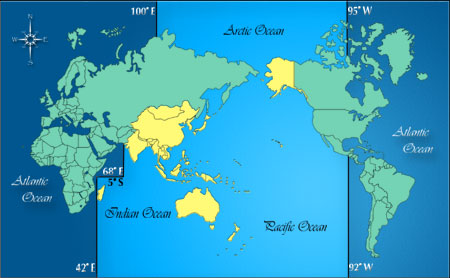Moving the Velvet Rope
Donald Rumsfeld is on his way to Asia to talk to China and South Korea, among others. South Korea’s main goal is to get back something that the United States seems less interested than ever in keeping:
On Friday, Defense Minister Yoon signaled his intent to tackle the issue during his meeting with Rumsfeld. “The issue of wartime command transfer will become one of the main issues to be discussed at SCM,” he told reporters. Yoon said it is the right time to begin discussions on the issue following the announcement of the ministry’s military reform plan aimed at achieving independent defense capabilities.
Celebrating the 57th Armed Forces Day on Oct. 1, President Roh Moo-hyun stressed the importance of the self-defense capability of the nation’s armed forces through regaining Seoul’s wartime command from Washington.
Under a 15-year military reform plan, the government plans to cut one-fourth of its 681,000 troops to 500,000 while modernizing its weapon systems. The U.S. has already scaled back its presence in South Korea from 36,000 to 32,500 troops. By 2008, it will reduce the number to 25,000 under a phased withdrawal agreement.
Two possible theories here: one is that they simply don’t understand the domestic political implications of putting U.S. troops under Korean commanders. The other view requires us to give the Uri government credit for a certain amateurish sincerity: they may genuinely seek the dismantling of the U.S.-Korea alliance, albeit slowly enough for them to achieve a soft landing (into the arms of China?). Rumsfeld seems equally unworried about such an outcome.
The Wall Street Journal quoted Rumsfeld as saying that as Korea changes, so does the nature of the relationship between the two countries. He said Washington’s promise to protect South Korea stands, but it will perform in a supportive capacity. The secretary said South Korea was no longer an impoverished, war-ravaged country dependent on support from Western nations but eager to take a more active role in its own defense, including assuming its own independent posture and building up a substantial fighting force.
The Chosun Ilbo’s paraphrase was that the U.S. seeks to be “a partner, not a patron.” And they say he’s no diplomat . . . .

All of this comes in the context of another Pentagon-Richard Halloran leak (HT: The Marmot), suggesting that the United States intends to accelerate the withdrawal of its remaining ground forces in Korea and put them under commands based at Camp Zama, Japan, and Schofield Barracks, Hawaii.
In addition, the headquarters of the Army in the Pacific is preparing to assume command of Army forces in South Korea, which are gradually being reduced and may eventually be largely withdrawn. Plans call for dismantling or shrinking the United Nations Command in Seoul that dates back to the Korean War that ended in 1953.
The Army also plans to transfer the Eighth Army headquarters from Seoul to Hawaii and to turn back to the South Koreans control of their forces commanded today by a joint U.S.-South Korea headquarters. The four-star American general’s post in Seoul would move to Hawaii.
Military officers say this could happen by 2008 or any time after. The official line is that the threat from North Korea must lessen and stability come to the peninsula first. The unofficial betting is that rising anti-Americanism in Seoul will cause that move to be made more sooner than later.
Either way, you can almost hear the metaphorical unhooking of the velvet ropes that mark the old Acheson Line.
1 Response